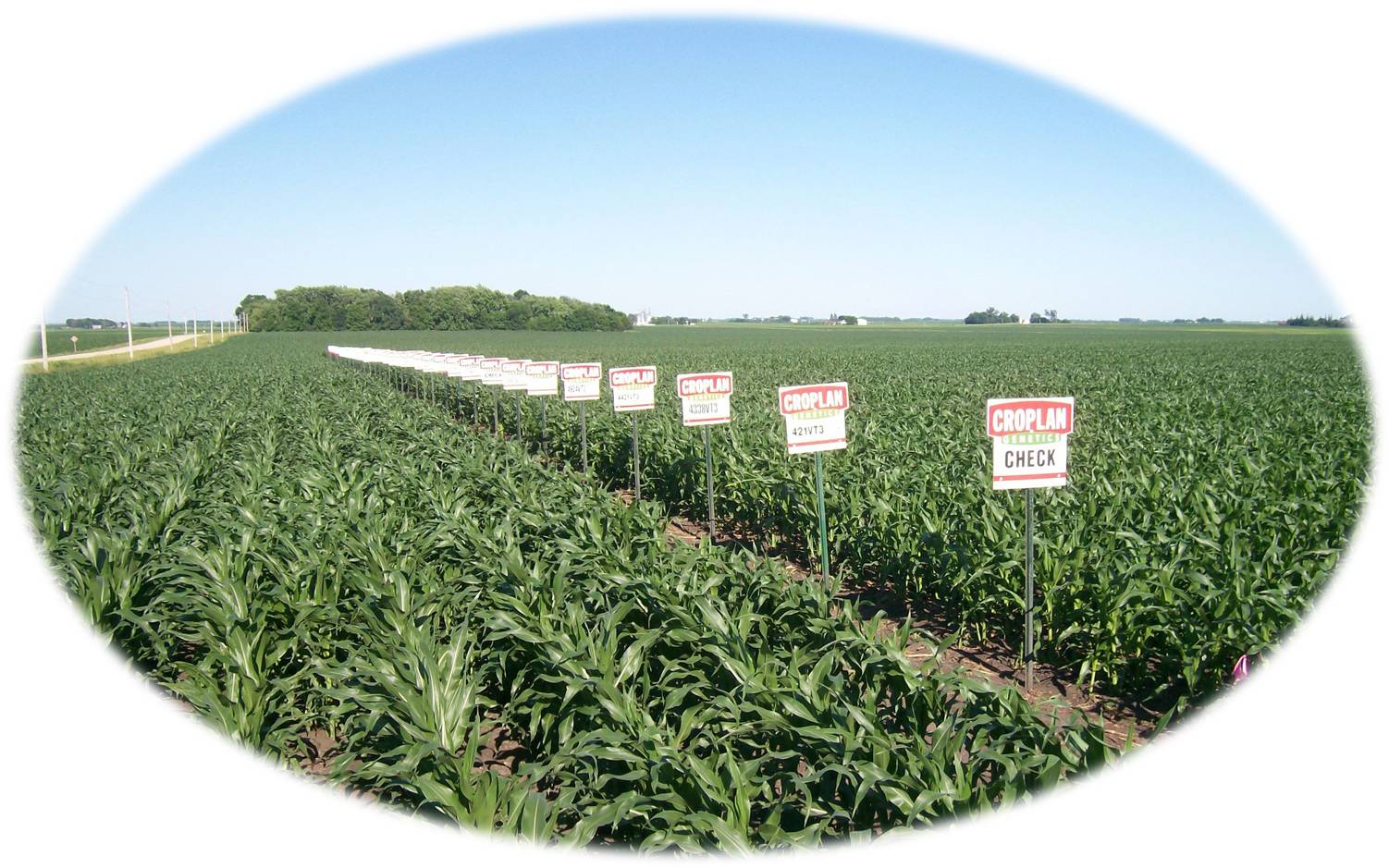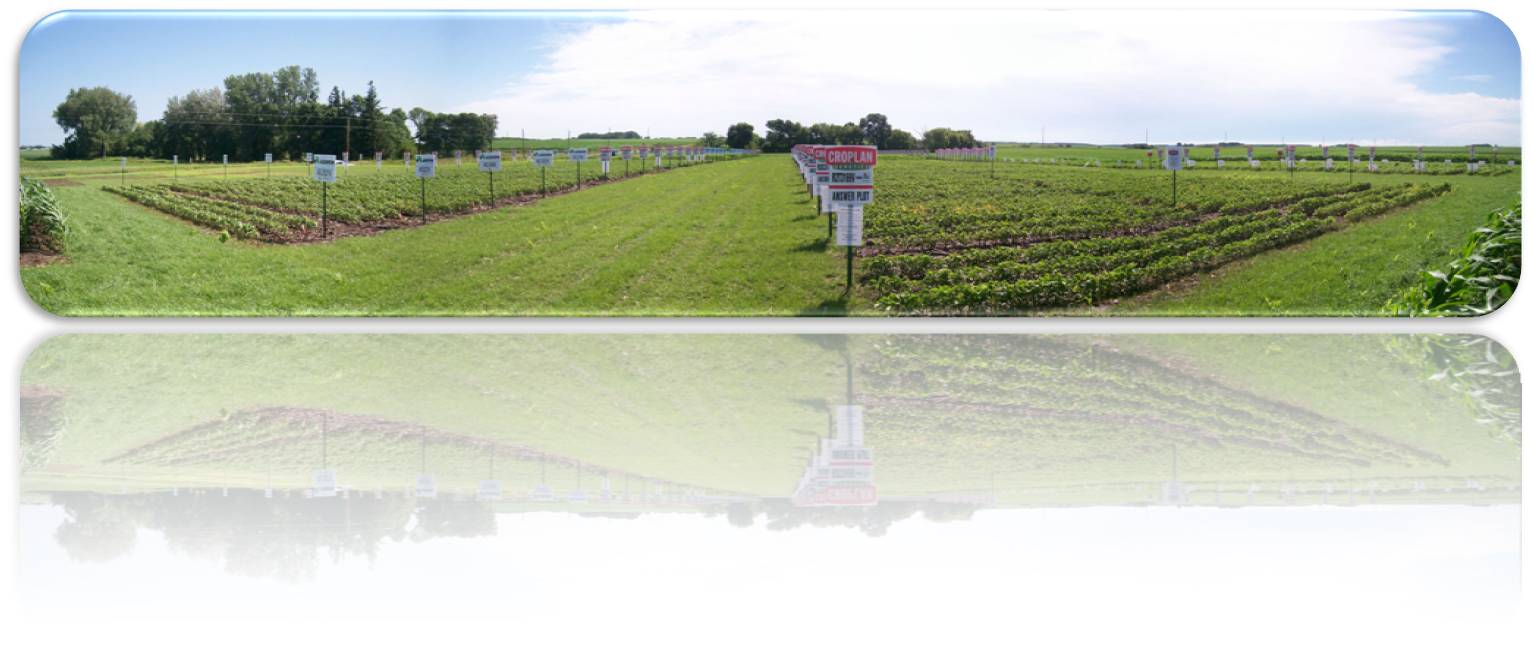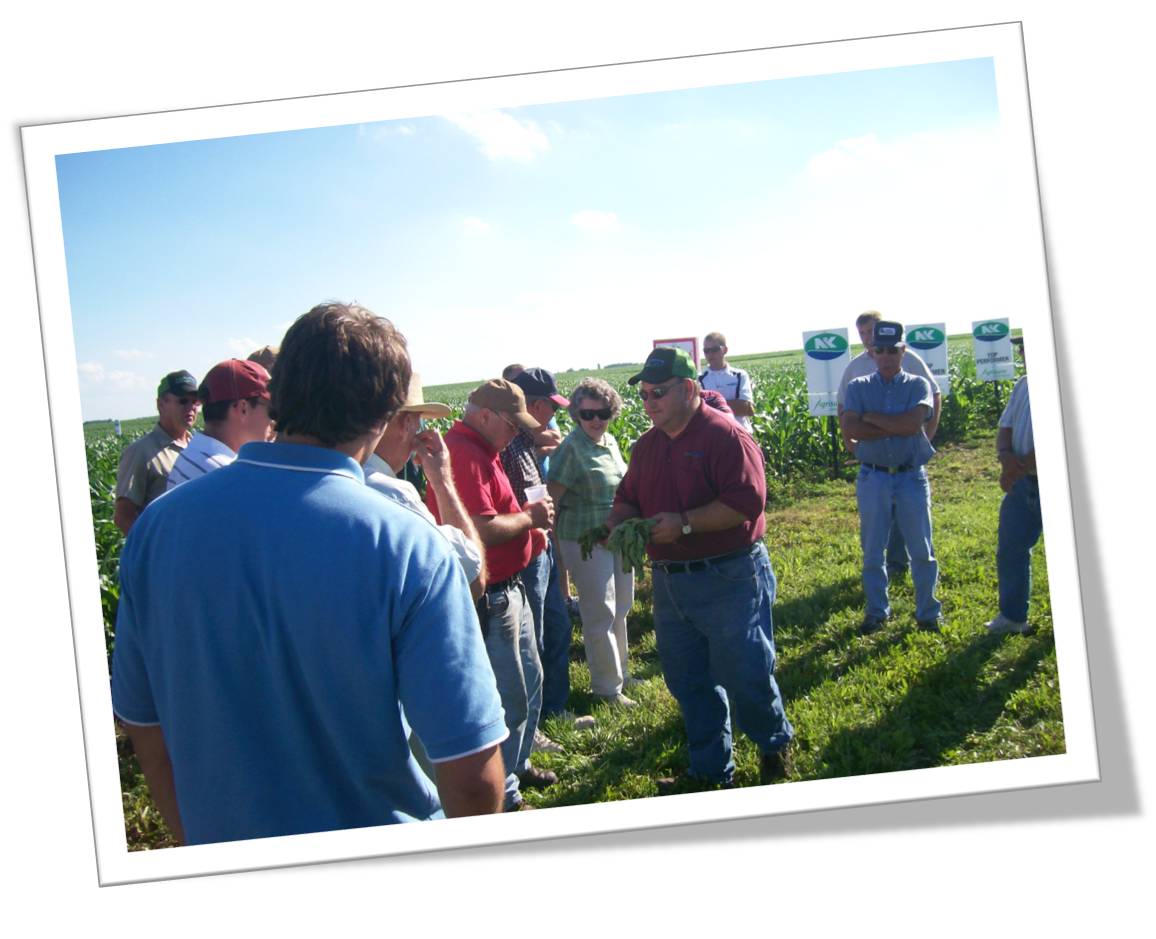I almost called them “field trips,” but that just sounds a little childish to me, like we’re in elementary school or something … don’t you think? 🙂 Anyway –
This last week the four other interns and I, who I will briefly introduce in a moment, went on two different facility tours. On Thursday we visited Global Ethanol, an ethanol plant located near Lakota, Iowa, and the next day we visited AGCO, an agricultural equipment company located in Jackson, Minnesota.
First, let me introduce the other four MaxYield interns. Below is a photo taken of the five of us at AGCO (and yes, I warned them that their faces where going to be posted on the internet!):
On the tractor, top left, is Kyle Frerichs. Kyle will be a senior at Iowa State University next year and is a SciMax Intern (MaxYield’s precision ag program).
Also on the tractor, to the right of Kyle, is Mercedes Dittrich. Mercedes is going to be a sophomore at South Dakota State University this fall, and is doing a shared internship with both MaxYield’s SciMax program and Premiere Crop.
Next to me, ground left, is Emily Schwaller. Emily also goes to SDSU and is a MaxYield 101 Intern, which means she gets involved in a little bit of everything MaxYield has to offer.
Finally, to the right of me (ground, far right), is Josh Bringleson. Josh will be a senior at Iowa State University and is a Seed/Technology Sales Intern.
Back to the “facility tours” –
At Global Ethanol we received an amazingly thorough tour of how an ethanol plant works – from where the grain goes in and ever step it takes to not only be turned into ethanol and loaded into a truck or rail tank, but also the other products which are a result of the process such as Distillers Dried Grains with Solubles (DDGS). At times it was loud and difficult to hear everything our tour guide was saying, but needless to say even if I heard everything, I would need to wipe to cobwebs of my chemistry book to fully understand the entire process. Fortunately, Global Ethanol’s Website explains how ethanol is made so I don’t need to get into the details. With that said, it was a very interesting tour. This particular plant has been running since November 2002 and operates every minute of every day of the year; of course there are shut downs due to unforeseen problems from time to time.
At the plant there is also a MaxYield office which deals with all the trucks coming into and out of the plant as well as all grain operations.
They aren’t green, but if you’ve ever had a love for agricultural equipment, you would enjoy a trip to AGCO. The AGCO Jackson Operations location has built numerous agricultural equipment, and mostly focuses on Terra Gators and CAT Challenger tractors. On our visit the main plant manufacturing facility assembly line, which builds equipment like the Terra Gator, was shut down for reorganization and improvement. There were still many employees in the welding and fabrication departments working diligently, but nothing was heading down the main production line. We received a tour through the entire main plant facility, viewing everything from where leaks are checked for using antifreeze at the end of assembly, to human and robotic welding, where raw materials are cut by lasers and where parts are clean, primed and painted.
Across an outdoor storage area is the Challenger Assembly building. This is where the “most powerful mass produced tractor in the world†” is produced. This assembly building contains two assembly lines where the tractor itself, as it heads down the line starts at one end, takes a 180° turn, and is finished when it gets back next to where it started. After each tractor is checked over the make sure all components run correctly there is an onsite outdoor track and indoor test area so each unit can be quality tested.
† The Challenger holds the world record for acres planted by planting 1,413 acres of spring barely in one 24-hour period.












